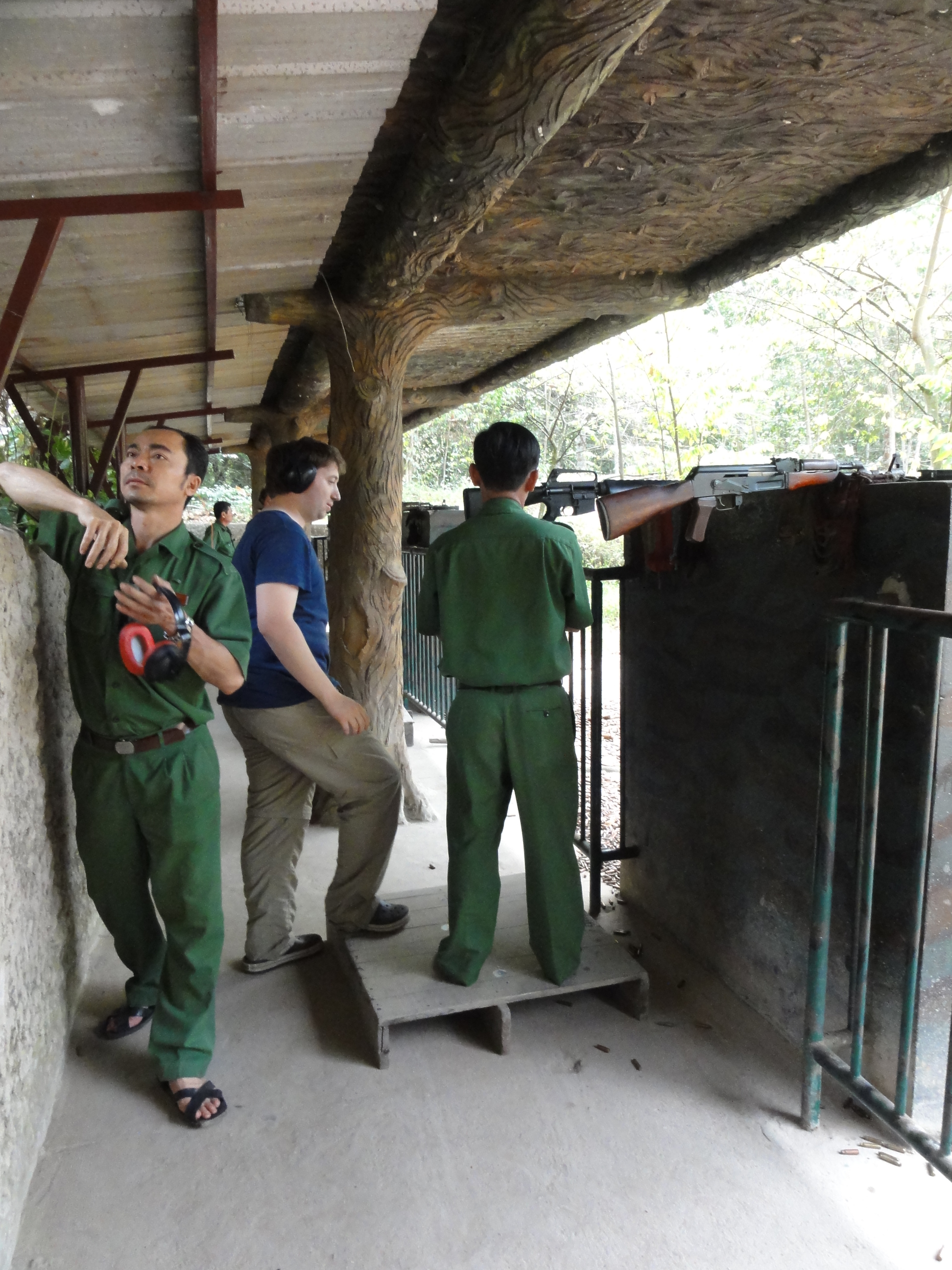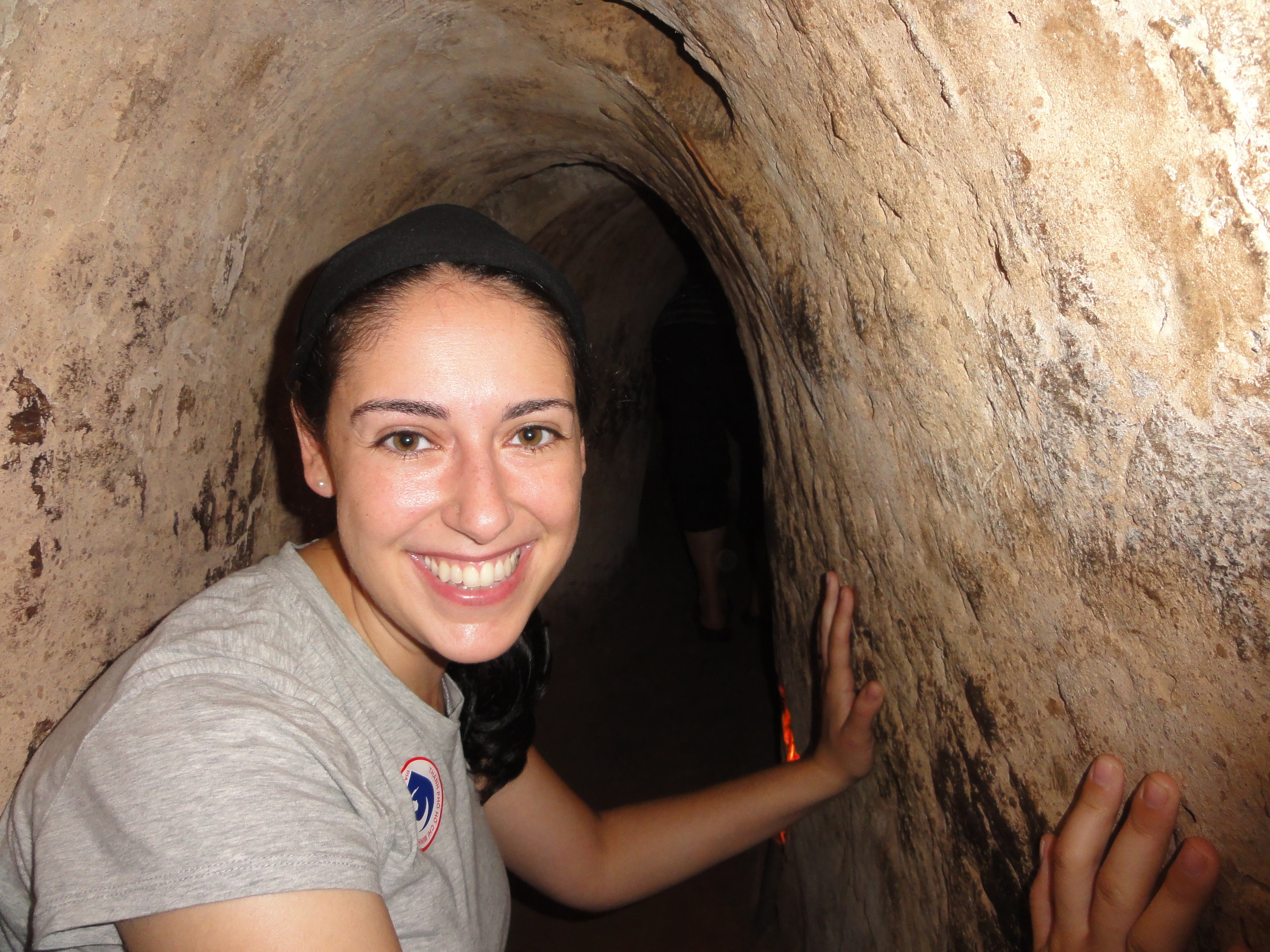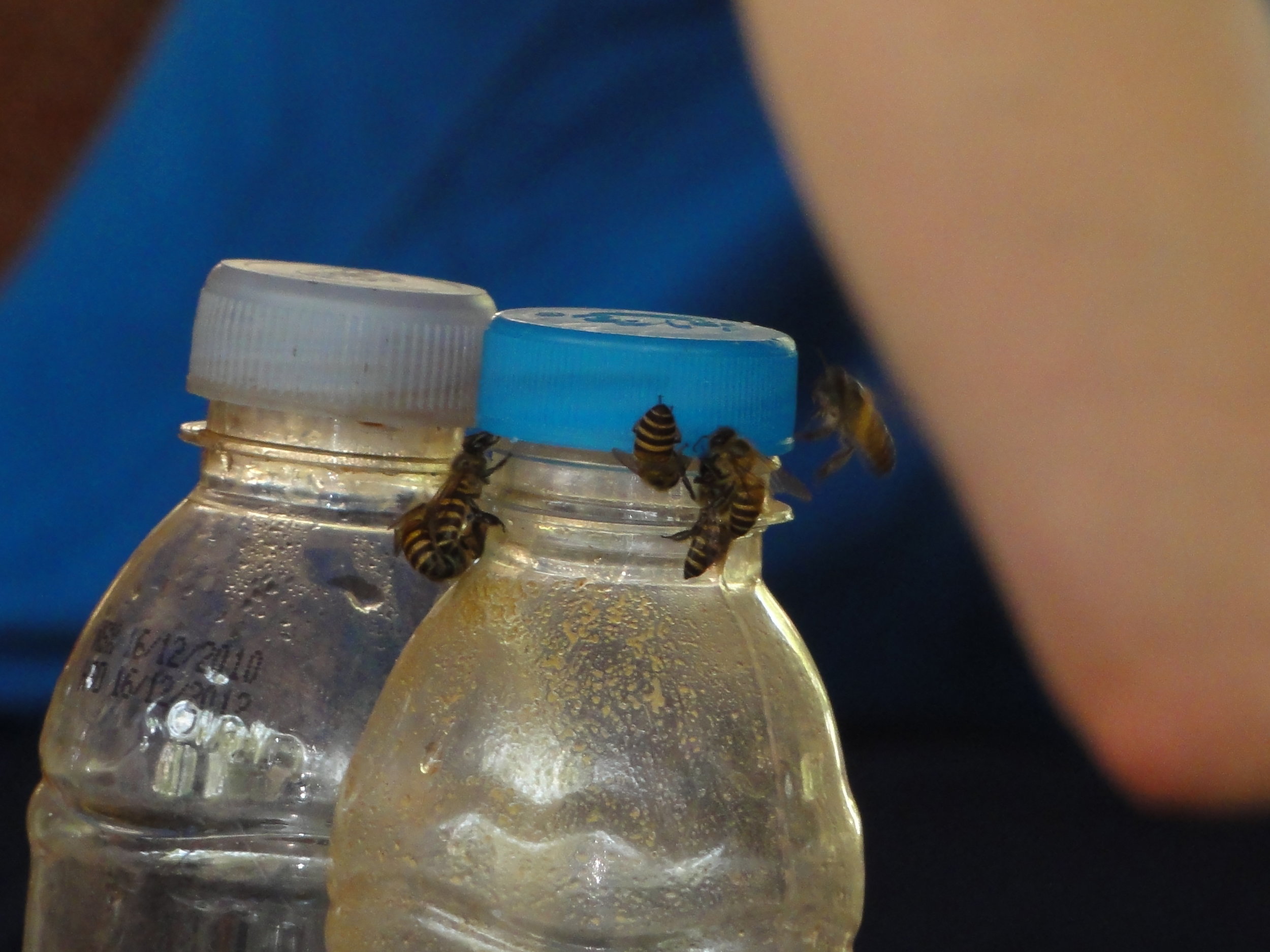Ho Chi Minh City
We took a flight from Hoi An to Ho Chi Minh City better known as Saigon. We got lucky (Danna may not agree) but the last minute airfare was actually cheaper than train tickets. For $34 per person a 13-15 hour train ride became a 1 hour flight. We didn't book a place in advance. We knew the backpacker area was full of guesthouses so we took a list of names and decided to figure it out when we got there. We settled in a really nice budget hotel right in the middle of the place to be. As is our custom, when we get to a new place we like to walk around and find the local market – it helps to get a feel for the area. The big difference here was the adventure of getting to the market.
Saigon puts the rest of Vietnam to shame when it comes to motorbike traffic. We were told that the city has 8 million people and 4 million motorbikes. That is an unconfirmed statistic, but I do think it is closer to fact than exaggeration. Now at this point we have been in SE Asia for a while. We are not intimidated or shocked by much. But standing in the middle of a traffic circle with what seems to be a constant motion of at least 12 lanes of traffic was a humbling experience that made us remember how foreign this place really is. We used any help we could get to across the street – fruit carts, strollers and at one point we were helped by an old lady (not the reverse) cross the road.
Saigon is a very interesting place. As the Chinese New Year approaches, all of SE Asia prepares for its biggest holiday. Street decorations are being put up, flower installations are being planted in the parks and the sale signs are going up in the store windows. The theme of all these variations of signage was the communist symbol in each of them. You see that Saigon is a city in a constant flux. This was after all the capital of the democratic South Vietnam not too long ago. Locals still call it Saigon but the government changed its name to Ho Chi Minh City to commemorate the great communist leader. In fact a local told us that the people who still “choose the American side” call it Saigon while the ones who “like communism” call it Ho Chi Minh City. This is a place that desperately wants to emerge as an international city and economic power – as can be seen by a couple of towering new skyscrapers – but also will not relinquish its communist beliefs – as evidence by the thousands of flags bearing the hammer & sickle logo. Then there is the other thing that city and really the whole country is still recovering from – the War.
In Hanoi, the capital of the country has been a capital for 1,000 years. The North won the war, Hanoi has gracefully changed over the generations because it has followed its own plan. We saw a lot of Vietnamese pride in Hanoi. Saigon was not so lucky. People forget that the Vietnam War – or as it is called here “The American War” was really a civil war. We heard stories of families being ripped apart and choosing sides and then fighting against each other – these families still don't talk to this day. Saigon tried to have its own identity and create its own future, that didn't happen and I am not sure the people are 100% ok with that.
We decided to learn more about the war and visit the Cu Chi province on a day trip. This area was of major strategic importance in the war. It lies north west of Saigon but from this area it is a short distance to major cities and borders. It became a focal point of the war and became the symbol for the Viet Cong's resilience and ingenuity in guerrilla warfare. The region itself was once different villages made up of mostly fruit and rubber trees. But the Viet Cong realized its importance during the independence war with the French. During this war, each village developed a small tunnel system to escape from and fight the French forces. But leading up to the Vietnam war, the tunnels of these villages were combined and expanded tremendously. Over 215 kilometers and three layers of tunnel systems snaked through the earth underneath a huge area of land. Entire villages could disappear within minutes, storehouses of ammunition and infantry could be moved without the slightest chance of being seen by the enemy. We went to visit these tunnels, now a museum of sorts to see just how the Vietnamese got the reputation of being ghosts on the battlefield.
The day trip got off to great start with our guide speaking English very well and being very informative. He told us a lot about the history of the war and Saigon. The day took a bit of a turn for the awkward when at a rest stop the guide asked me where we were from? We get this question a lot as we travel. Most of the time, this is being asked by some shop owner trying to make conversation so we would then visit his/her store. When that happens, I almost always say Canada because we learned early on that saying America creates a much bigger reaction (related to shop owner's universal belief that all Americans are wealthy more than anything else) than Canada. But here, as we were not in a shop or on the street – my guard was down. Where are you from? Asked the guide – I said New York. He said “oh, America?” and we exchanged glances. If that wasn't awkward enough, for the rest of the tour “American” and “Enemy” were used interchangeably and both Danna and I noticed that his eyes lingered just a little longer when he looked in our direction. To be fair though, the guide did pull me aside to apologize for all the “American Enemy” talk, which quickly switched into a demonstration of the gruesome traps that were set up in the jungle to maim American soldiers. The trip ended with a propaganda film made in the late 60's praising the “Hero American Killers” (that was the name of the medal awarded to those who killed the most Americans) that lived in the quiet peaceful village of Cu Chi... Awkward.
But, being objective – some of the things the Vietnamese did to survive was simply brilliant. We were able to go into small pieces of the tunnels which were shockingly tiny and cramped. We learned about the ventilation system they created for the tunnels by using termite mounds as camouflage for the vent holes and using the insects themselves to creates air passages to the surface by using long hollow bamboo poles. The guerrillas also used every scrap of American artillery – live and dead – and recycled it into land mines, tools, or even cookware. As we walked through the jungle landscape, seeing how the Vietnamese army moved around underground and placed hidden traps around every corner you could just imagine how the American army felt like there was no way to win.
One of the scariest parts of walking around was the constant sounds of gunfire in the background. As we made our way through the exhibits, we reached a firing range where you could pay to shoot different guns that were used in the war. Our guide said “you are American you must shoot the M-16.” So Danna and I put on our ear protection and took aim. The guns were mounted for safety, but even so shooting such a powerful weapon was a crazy feeling – and super loud. It was a very memorable way to end our excursion. (Danna said she felt really strange being a known American shooting guns in Vietnam – I agree).
The tour ended by dropping us off at the War Remnants Museum. The museum is a sobering reminder of how every war has very ugly realities. This museum was not exactly unbiased towards certain American behaviors. The museum was full of pictures, artillery and has a parking lot full of American tanks, planes and other Army vehicles. It was tough being an American in this place – probably the only time on the trip that we have felt this way.
We spent the next couple of days in Saigon, learning our way around the city. The area we stayed in was very lively with bars, cafes and lots of shopping. We had a nice time wandering around the streets looking for the best deals. One of the big teases of SE Asia is the smells of all the food coming from everywhere. Granted, not all of the smells are good – they seem to be fond of dried flattened squid – but most of the stalls have amazing aromas. None of these places are remotely kosher. Vietnamese people pretty much eat anything. So, it was really nice to have a Chabad in town where we could get a good hot meal. When we got there, they had one special Vietnamese dish on the menu. It is a sort of fish stew with rice noodles and vegetables that needs to be ordered 24 hours in advance so they can prepare it properly. We had to try it. We came back the next day expecting some big bowl of soupy, noodley fish stew. We were way off. A massive tray of raw veggies followed by a huge plate of raw fish an overflowing plate of raw rice noodles. The tray had a flame underneath and we were actually supposed to cook everything ourselves in the pot of boiling soup ourselves! The whole experience was a ton of fun but I'm not sure if Chabad is really the place to try genuine Vietnamese. The flame ran out twice, the soup was never hot enough to really cook the fish quickly or make the veggies soft. We ate it, it was definitely worth the experiment – but we went back to schnitzel and kebabs for the rest of our stay.
We did take another day trip to Mekong Delta south of Saigon. The Mekong River which runs the entire length of SE Asia breaks apart into tributaries in Southern Vietnam. The landscape is lush islands and rice paddies all along the river's branches. We took a boat and hopped around from island to island eating local fruits, going to a coconut candy factory and just relaxing in hammocks in a peaceful garden.
Saigon is our last stop in Vietnam. We have been here for almost two and a half weeks and there is so much we didn't get to do! From the beautiful North (which we barely explored) to China Beach and Hoi An in the center to fast and furious Saigon - Vietnam is an amazing place to visit.
Now we are off to Cambodia, making our way to our fourth wonder of the world....Angkor Wat.































































